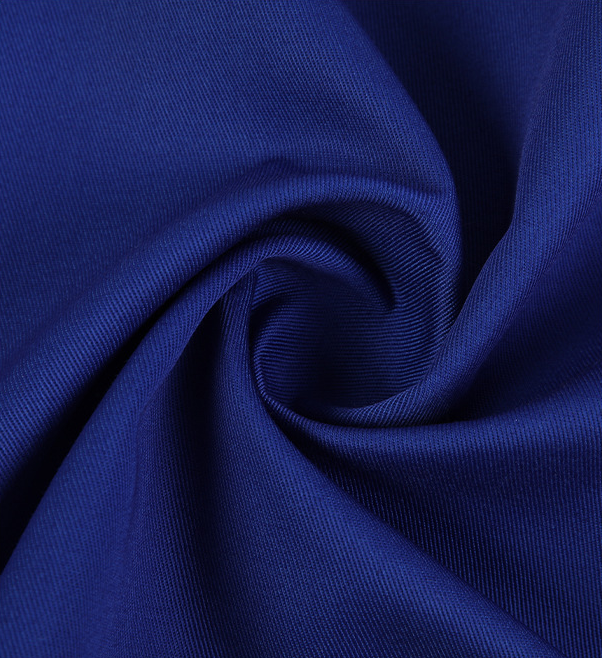JoEllen Skinner, right, helps senior Katie Baker into a corset Skinner made for a recent USC play. (USC Photo/Chris Shinn)
Designing women sew up slots in a USC class that required long hours, attention to detail and knowledge of a new vocabulary Mini Matt

For sheer daring, the two students who took the biggest leap of faith in a course last semester might have been sophomore Erica Park and junior Kimberly Morris. Neither had much sewing experience, yet they signed up for the USC School of Dramatic Arts’ first-ever class in corset construction.
Corsets, which have been squeezing their way back into fashion (“Hold Your Breath: They’re Back,” trumpeted The New York Times three months ago) are precise garments to make. They have a lot of small pieces, curved seams, gussets, grommets and laces, decorative piping and tabs, and handmade fabric bone casings that hold the plastic, spiral steel or rigid spring steel stays. (Whalebone went out more than a century ago.) Oh, and they must be carefully fitted to the body. They have little in common with an apron or pajama pants, which are the typical sewing projects for novices.
But Park, Morris and five others braved the intricacies of the period undergarments. First, teams of two made a corset adapted for modern bodies and modern theater practices for use in 17th- or 18th-century plays. These were made from coutil, a strong fabric resistant to piercing from stays, and featured a row of decorative bound tabs at the hem. Each student did her final project alone, making a corset from the late 19th or early 20th century out of fashion fabric backed by coutil.
Instructor JoEllen Skinner, who carefully inspected the work for quality, was thrilled at how well everyone did.
“They have a lot to be proud of,” she said.
Costume design is one of several non-acting majors offered by the USC School of Dramatic Arts. Its design major includes instruction in scenic, lighting and costume design. There are also majors in sound design, stage management, technical direction, and visual and performing arts studies.
Newbie seamstress Morris, who made things even tougher for herself by picking silk charmeuse for her second corset (it’s slippery and hard to control), said she picked up a wealth of practical knowledge during the class.
“I learned all the different hand stitches as well as construction techniques,” she said.
But don’t assume this was simply a sewing class. Skinner, who has worked professionally in costume shops for 15 years, has been researching the academic history of corsets for at least that long. She spent much of the class teaching the history and sociology of corsetry, relating it to silhouette and period design.
Corsets have long been bound with cultural significance.
“In 18th century France, stays were a literal symbol of a woman’s uprightness and virtue,” Skinner said. A woman with an unsupported body might prompt rumors of pregnancy or create an impression of slovenliness or laxity of morals, she said.
Both boys and girls of the upper class wore corsets from the 17th century to the early 1900s, she noted. Children were shaped from birth by being tightly swaddled as they slept, and moved into corsets as they became more mobile.
“Both the swaddle and the stays were thought to form a child’s body, teach good posture and act as an outward show of nobility and upright character,” Skinner said.
For the young USC designers, learning to make corsets also meant dusting off antiquated language from history.
For the young USC designers, learning to make corsets also meant dusting off antiquated language from history. Words such as petersham and grosgrain (types of ribbons), coutil, Swiss waist and corselet (types of corsets), and spoon busk (a thick, rigid center front stay with a scooped spoon shape at the bottom) became part of the students’ daily vocabularies.
During her time at the Los Angeles Opera, Glimmerglass Opera and USC Dramatic Arts, Skinner estimates she has made dozens of corsets. She said that there is a continual need for new corsets in any theater or opera costume shop, as they get reused over and over in various productions. The class came about from student demand, she said, and she hopes to teach it again.
Colette Adatto, a junior costume design major, said she was fascinated by the garment’s history. She plans to wear her brocade corset, which had a tricky pattern.
“I’ve got a couple of skirts to try it with,” she said.
Halfway through the construction, she estimated that she had already spent “entire days” working on her final corset.
Carissa Dickerson, a senior acting major, selected black satin with black lace accents for her final project. A skilled seamstress who has taken the school’s costume construction class, she said she learned a great deal about fitting in the corset class.
“I’ll be wearing it for auditions for period pieces,” she said. “Also, there’s a possibility of a Halloween costume next year.”

Taffeta Silk Copyright © 2023 University of Southern California